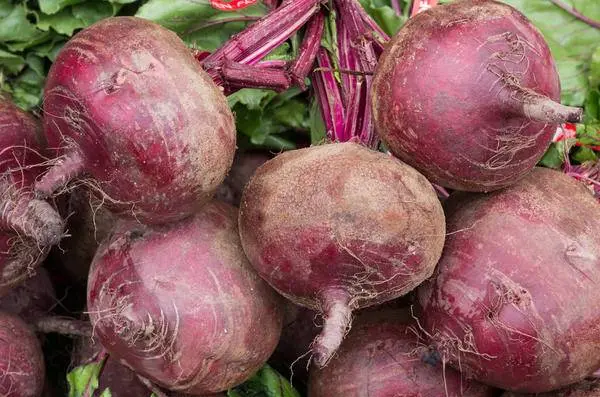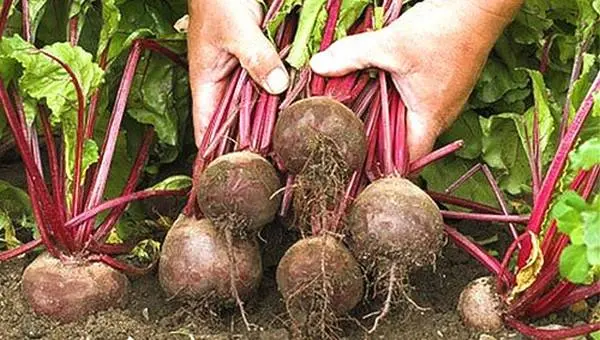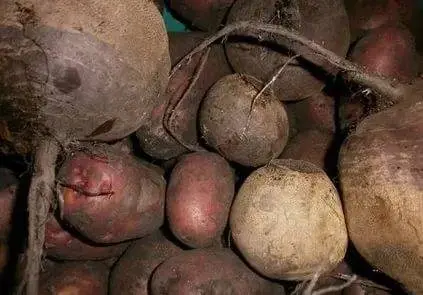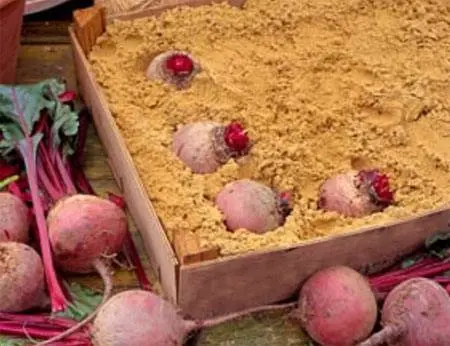Contents
Beetroot, beetroot, beetroot – the names of the same delicious sweet vegetable rich in vitamins and minerals. Beets are grown in almost every suburban and household plot. It is not difficult to get a rich harvest with the right agricultural technology, but it still needs to be preserved until spring in a commercial form.
The question of how to store beets in the cellar is of interest to many beginner gardeners, and experienced vegetable growers are often looking for something new to test. There are many ways to save beets, but there are nuances, without which it is difficult to keep beets fresh, dense until spring. That’s what we’ll talk about today.

Variety selection is important
Since the beets in the cellar or basement will have to be stored until spring, you need to pick up the maturing varieties. And not all beets have such properties. Therefore, the issue of choice must be taken seriously so that sluggish and even rotten vegetables do not have to be thrown out of the cellar in winter.
What varieties of beets to choose for long-term storage:
- Bordeaux 237;
- Late winter A-474;
- Egyptian flat;
- Red ball;
- Libero.
Many gardeners grow the Cylinder variety on their plots. It has excellent taste, bright burgundy color, but it is stored only if all conditions are met. The slightest deviation leads to the fact that the vegetable begins to wither.
Harvest
The issue of storing beets in the winter in the cellar includes harvesting. Vegetables must be harvested on time. As a rule, beets are selected from the ground before the first frost. In the south, vegetables are harvested at the end of October, and in regions with a more severe climate at the end of September.
For harvesting choose days with warm and dry weather. For digging up the root crop, it is better to use a pitchfork: so, we injure the vegetable less.
In this case, the central root can be damaged, and pathogenic microorganisms can enter the root crop through the resulting wounds, causing putrefactive processes. Rot, fungal diseases lead to significant yield losses during long-term storage of beets.

Storage space for vegetables
Beets, although not a capricious vegetable, still require the creation of comfortable storage conditions. Root crops are laid in cellars or cellars. These rooms need to be specially prepared. If the necessary conditions are not maintained in the storage, then neither modern nor ancient methods of storing beets will give the proper result.
What needs to be done in the cellar to save the harvest of root crops:
- Before storing vegetables for long-term winter storage, the room is cleared of any debris.
- It is desirable to whitewash the walls by adding karbofos or whiteness to lime in order to destroy harmful microorganisms.
- Create temperature conditions. Root crops are perfectly stored at a temperature of 0-+2 degrees. Higher temperatures encourage haulm growth and beet drying.
- Sunlight should not enter the room.
- Optimum humidity is 90-92%.
Preparing root crops for storage
Winter storage of beets in the cellar requires careful preparation of root crops:
- After the beets have been selected from the garden, there is no need to rush to transfer them to another place. It is better to leave it under the sun to dry.
- This is followed by the stage of inspection of each root crop for damage, injuries. Such specimens are rejected and processed first. Healthy root crops are suitable for long-term storage.
- The question of how to keep beets in the cellar in winter includes sorting vegetables by size. For laying in the basement, it is best to choose root crops from 10 to 12 cm in diameter. Smaller ones will quickly wither, and large specimens have a rough texture of the pulp. It takes a long time to cook such beets, and it is stored poorly.
- Sorted root crops are cleaned from the ground. Do not use a knife, chips, brushes. In this case, injuries will appear on the beets. Root crops dried in the sun simply tap lightly against each other.
- Beets are stored without tops. How to remove the green mass? According to the rules for preparing root crops, the tops must be cut off with a sharp knife, leaving a tail of no more than 1 cm. Some gardeners cut not only the tops, but also the top of the beets before storing the vegetable for storage. This is a possible option, but care should be taken to dry and disinfect the cut. First, the root crop should lie in the sun until it dries completely. Secondly, the cut should be treated with dry wood ash. Experienced gardeners do not recommend twisting or simply picking off the tops.
- Often, new roots begin to grow on root crops by the time of harvest. They need to be pinched off along with the lateral roots. The central tap root is also cut off, but not completely, but a tail of at least 7 cm is left.

Ways of storing beets
Since more than one century has been growing the root crop, gardeners have come up with many ways to store beets in the cellar. Consider the most popular options:
- beets are placed on top of potatoes;
- stored in boxes with holes made of wood or plastic without pouring;
- sprinkled with various fillers;
- in polyethylene bags;
- in pyramids on the shelves.
How to properly store beets, which option is better, is up to the gardeners themselves to decide. We will consider the most common methods in more detail.
Potato + beetroot
Potatoes are first poured into a large box, and root crops are placed on top of it. By the way, this method is considered the best and optimal.
Let’s see why. Potatoes like the dry climate of the basement or cellar. And beets, on the contrary, are better stored at high humidity. During storage, moisture evaporates from potatoes, which is immediately absorbed by beets. It turns out mutually beneficial “cooperation”.

In the boxes
- Option one. The root crop is stored well in boxes made of wood and plastic. The main thing is that they have holes for air circulation. No more than 2-3 layers of beets are placed in the container. Vegetables are not sprinkled with anything.
- Option two. Root crops after laying in boxes are abundantly sprinkled with dry table salt. You can do otherwise. Dilute a steep saline solution (brine) and hold root crops in it. After the vegetables have dried, they are simply stacked for storage. Salt is not only an excellent absorbent, but also a good protection against fungal and moldy diseases.
- Option three. Many gardeners use plant leaves to store beets, which release a volatile substance called phytoncide. They do not allow pathogenic bacteria and fungal diseases to multiply. Leaves of mountain ash, bitter wormwood, fern, tansy, snoot and other odorous herbs are suitable. They are placed at the bottom of the box and between the layers of root crops.
- Option four. You will need a wooden box without holes. Dry ash or river sand is poured at the bottom. Then, beets are laid at some distance from each other. Sand on top, another layer of root crops and again sand or ash. Sand before use is recommended to be calcined on fire for disinfection.

Root pyramids
If there is enough space in the cellars and there are shelves, then when storing beets, you can do without containers. How to save beets in this way?
On racks or shelves (not on the floor!) Lay a layer of straw or cover them with burlap. Burgundy root crops are laid out on top.
In clay glaze
There is another old, time-tested way to preserve fresh beets. Although few gardeners use it because of the laboriousness of the work. Also, unlike all the options, this is the “dirty” way:
- First, a clay solution is prepared, it should resemble rustic sour cream in consistency. Some gardeners add a little powdered chalk.
- Then the roots are laid in clay, gently mixed and taken out to dry. After a while, the vegetables are again dipped in a clay mash.
- What gives such a method? Firstly, clay does not allow the root crop to dry out. Secondly, microbes and bacteria are not able to penetrate the clay glaze.
In polyethylene bags
Storage of beets in the cellar or basement is possible in polyethylene bags. This is a good option for small spaces. After all, a bag of root crops is hung on nails, does not take up space on the shelves. Holes are made at the bottom of the bag to drain the condensate. It is not recommended to tie tightly, but from time to time the bag needs to be aired.

In piles
If a rich beet crop is harvested and there is a lot of space in the basement, it is not necessary to use any containers or shelves to store root crops. They are layered with vegetables. The bottom row is the most extensive, the shoulder tapers upward. This storage ensures air circulation.
Conclusion
We talked about the most common ways to save vegetables during the winter without loss. Each gardener makes his own choice. Many vegetable growers use several methods to store root crops at the same time in order to choose the best option. The fact is that the microclimate of the cellars is different: the same method can show both negative and positive results.
If you have your own, proven options, we suggest sharing them with our readers.









